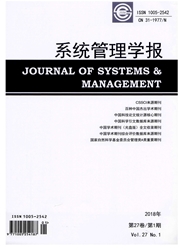

 中文摘要:
中文摘要:
目前大多数行程时间可靠性计算模型均未考虑例如停车换乘之类的组合出行方式对路网行程时间可靠性的影响;对可靠性的动态变化轨迹研究不够深入。以加权行程时间方差衡量路网可靠性大小,基于停车换乘交通分配理论构造了一个准动态行程时间可靠性计算模型。描述了出行者考虑可靠性影响下的方式一路径动态选择行为,刻画了路网可靠性动态变化轨迹;基于K优路径和连续平均算法,设计了模型求解算法,并通过经典算例验证了模型和算法的有效性。与传统单方式可靠性计算模型相比,本文所建模型可以用来分析停车换乘措施对减少交通拥堵、提高路网可靠性所起的作用;分析出行者可靠性偏好大小对路网可靠性变化的影响。
 英文摘要:
英文摘要:
Most models for calculating travel time reliability are neither able to reflect the influence of combined modal trips such as Park & Ride on network travel time reliability nor depict the dynamic fluctuation of reliability trajectory. Using weighted travel time variance as the reliability indicator, we establish a quasi-dynamic travel time reliability calculation model based on traffic assignment theory with Park & Ride travel mode. The model can be used to describe commuters' travel behavior when travel time reliabillity is taken into consideration and to show the dynamic trajectory of the network travel time reliability. Furthermore, we design an algorithm based on K-shortest paths algorithm together with the successive average method to solve the model, and use a classic network to verify the validity of both the model and the algorithm. Compared with traditional reliability calculation models which only consider single modal situation, the proposed model can be used to analyze the effect of Park & Ride travel mode on reducing traffic congestion and improving network travel time reliability; and to analyze the influence on travel time reliability caused by commuters' reliability preference.
 同期刊论文项目
同期刊论文项目
 同项目期刊论文
同项目期刊论文
 期刊信息
期刊信息
